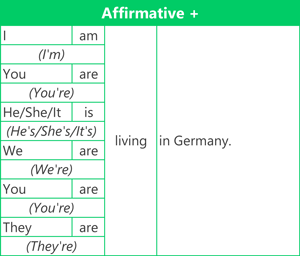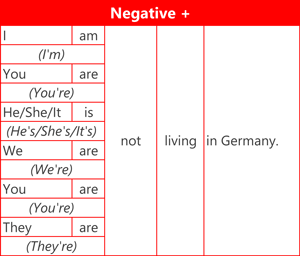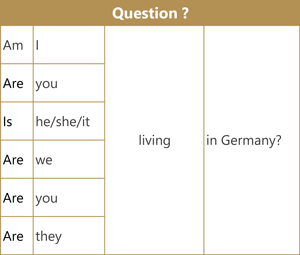
The present continuous (or present progressive) is one of the English verb tenses.
You can learn more English online by visiting our free English grammar lessons, which include other verb tenses and more grammar points.
You can also find more grammar, vocabulary and communication tasks for each English level:
We use the present continuous tense to describe:

It describes temporary actions that started before and are still happening right now.

It can also describe actions or situations that started before and are not yet finished. These are temporary and last for a limited period of time. (It might not be happening at the time of speaking.)

State verbs do not usually have a continuous form, and are used in the present simple. They commonly describe something that is not an action (e.g. emotions, thoughts, relationships, senses). These verbs can be used in the continuous form when they describe an action or a process.

This describes future events that are already planned, e.g. the time and place are already decided.
How do you write and pronounce the present continuous?
Here are examples of the affirmative (positive) form , negative form and question form using the verb 'live'.


Contractions
It is also possible to contract auxiliary verb 'is + not' (aren't) and 'are + not' (isn't)

Short answers
We commonly use contractions (e.g. 'I'm meeting friends' or 'He isn't working today') for the present continuous tense, especially when speaking English.
Sometimes we need to remove a letter, and other times we need to add another letter. Here are the exceptions:
1) One 'e' at the end of a verb
Remove the final 'e' and add 'ing'.
Examples:
[live] I'm living in Germany.
[save] I am saving money for a new car.
* Verbs ending in 'ee'
These follow the normal rules.
Examples:
[see] He's seeing his friends.
2) Verb ends with consonant + one stressed vowel + one consonant
Double the final consonant and add 'ing'.
Examples:
[stop] I'm stopping the car.
[swim] We're swimming in the sea.
* Verbs ending with an unstressed vowel
These follow the normal rules, and the last consonant is not doubled.
Examples:
[develop] They're developing a new idea at the company.
3) Verb ends in 'l' (British English)
Double the final consonant and add 'ing'.
Examples:
[travel] I'm travelling with friends.
4) Verb ends with 'ie'
Change 'ie' to 'y' and add 'ing'
Examples:
[lie] She's lying to the teacher.
5) Verb ends with 'ic'
Add 'k' before 'ing'.
Examples:
[panic] He's panicking about the exam.